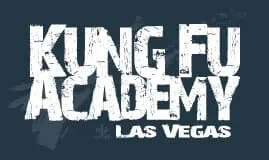The Wing Chun wooden dummy is one of the most misunderstood training tools in martial arts. What exactly is this strange, exotic structure used for? Is it a conditioning device? Or is the dummy a representation of a physical opponent? In this blog post, we'll break down the purpose of the Wing Chun wooden dummy, correcting some common misconceptions along the way.
Wing Chun Wooden Dummy
The Wing Chun wooden dummy, or Mook Yan Jong, is a training tool designed to enhance your Wing Chun skills. Contrary to popular belief (and its use in many movies and tv shows!) it is not meant to serve as a punching bag for heavy conditioning. It's also not supposed to be "just" a mock wooden opponent, either!
Positioning and Footwork
Two of the fundamentals we focus on in Wing Chun training are positioning and footwork. When you train with the dummy, it's important to understand that you're not just mindlessly striking it. Instead, you're working on your ability to position yourself correctly and develop efficient footwork.
Wing Chun Wooden Dummy
Understanding Energetic Representations
Like we mentioned, the wooden dummy is not meant to be a "wooden opponent." And this is true: the dummy's "arms" are not intended to model a person's physical limbs. This helps to explain why the dummy doesn't quite look like a human being.
But the dummy does help you to train in a way that models an opponent. The "arms" of the dummy can be thought of as energetic representations of potential attacks. What does this mean?
Consider this…
One arm extending from the dummy can be thought of as a left or right arm of an opponent. But another "arm" (positioned the same way) might represent a knee, a leg, or even a shoulder. There is not a one-to-one relation, because each "arm" can serve as multiple different "attacks," depending on your positioning.
Working with Energy
When you practice with the wooden dummy, you're essentially working with representations of the energy that could be directed towards you in a real combat situation. Working with the dummy is about learning to deflect and navigate around an opponent's energy while aiming your own attacks at the core or central axis, known as the center line, of the dummy. But the goal here is technique, not attacking the dummy like a heavy bag. You might actually injure your hands doing that!
Contact Points and Energy Pathways
To use the wooden dummy effectively, you should make contact along the ends or tips of its arms, which are a lot shorter than a real person's limbs. This best simulates how you would deal with an actual opponent's attacks. And if you're deflecting an attack on one end of the dummy, you should be prepared to counter or deflect another potential attack on the opposite end simultaneously.
Do you follow me so far?
Developing an instinctive "feel" for how attacks can impact you, and what to do to work around them, is a result of the mechanics of the human body. This is what a Wing Chun dummy allows you to practice, unlike a punching bag.
Wing Chun Wooden Dummy
Leading Energy Towards the Center
When you're training, keep in mind that you should try to direct your energy (through attacks or strikes) towards the center of the dummy, not just mindlessly striking or hacking away at it. Instead of dissipating your force, you should focus on directing it efficiently and effectively.
Bottom line is…
In summary, the Wing Chun wooden dummy is a great training tool that serves multiple purposes in Wing Chun practice. It helps your positioning, footwork, and ability to work with an opponent's energy. Remember: it's not about brute force, but precision and efficiency.
